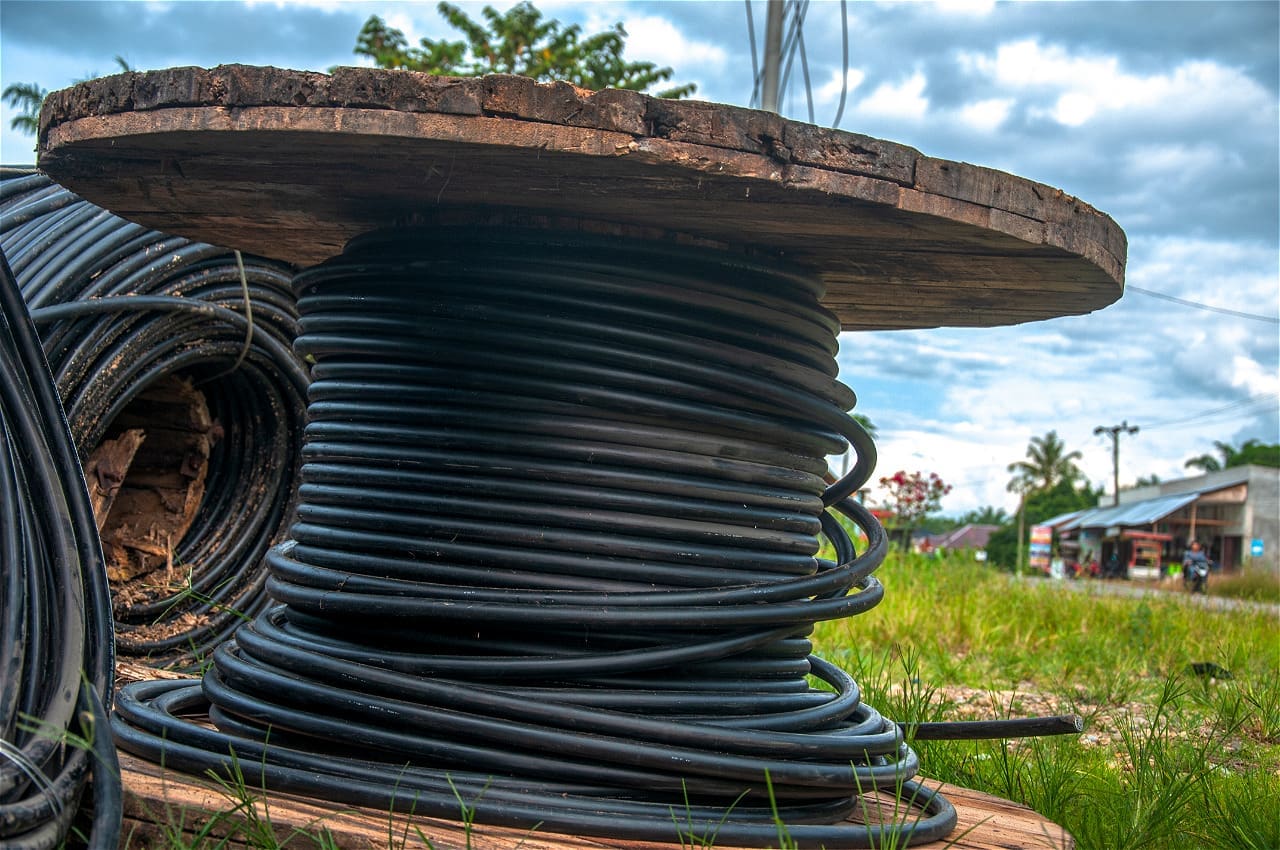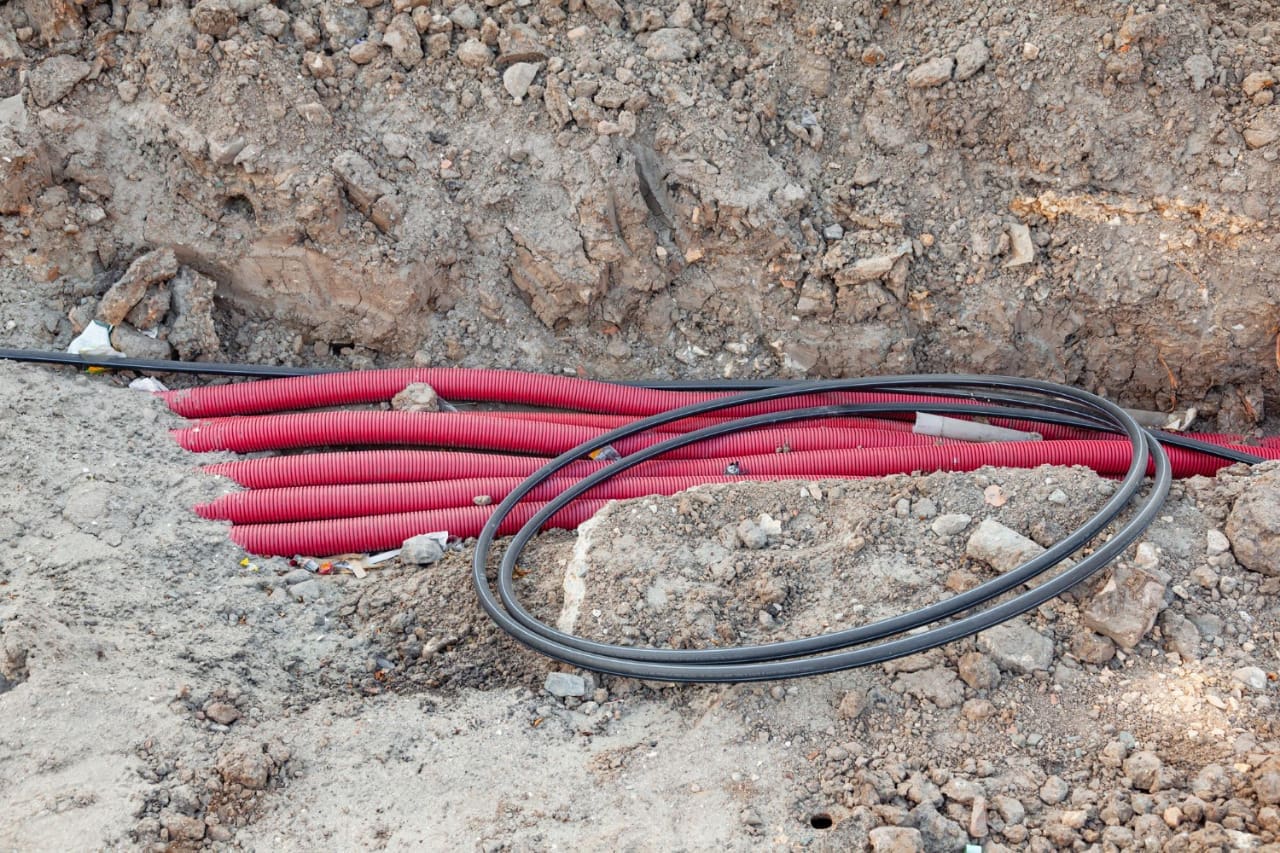Modern technologies for laying cable lines
 Technologies for laying cable lines
Technologies for laying cable lines
The development of distributed energy is driving a growing demand for the expansion and modernization of power grid infrastructure. Cable lines are a key part of this. What are they and what are their types? What does safe cable line installation involve? What are the modern technologies used in this process?
The power system consists of various components, such as generating units, cable lines, power poles, transformer substations, and so on. Changing energy production and consumption patterns, including the increasing share of renewable energy sources in the energy mix, contribute to the increasing demand for new cable lines. These can be both above-ground cable lines, run on various structures, supporting cables, and special cable ducts, as well as underground cable lines, as the name suggests, buried underground. The process of installing cable lines is complex and multi-faceted.
Design and construction of cable lines
The first challenge of any new investment involving cable lines is developing an appropriate design. In this context, a power line map comes in handy, allowing for the planning of the lines’ routes. Depending on their type, purpose, and length, the design must consider numerous factors, including the building’s distance from the medium-voltage line, the presence of other network components near the planned line route, such as transformer substations, high-voltage lines, medium- and low-voltage lines as well as terrain conditions.
Cable lines are often installed in locations where overhead lines are difficult to route – for example, due to natural obstacles such as rivers, lakes, or other forms of water, or because they run through highly urbanized, populated areas, or difficult-to-access locations (see Medium voltage power line and building a house). Additionally, cable lines are installed where there are factors that can cause damage to overhead lines. Thanks to their numerous advantages, cable lines offer a practical and reliable alternative to overhead lines in such cases.
Preparing the design, plans, and collecting the necessary documentation are all preparatory stages for the construction of a cable line. Only after proper formal preparation can fieldwork actually begin. This, too, is a multi-stage process, including marking out the excavation route in the field, and then, for example, preparing the trenches and installing the equipment that will be used during the cable pulling and laying phases.

Technical standards for the construction of cable lines
For a cable line to operate safely and reliably, it’s essential to adhere to appropriate standards during its installation. The entire process begins with the transport of cables to the construction site. Cables must be properly prepared, wound, and secured. The next step is proper cable unwinding, which involves monitoring the unwinding process at every stage and at every part – the cable drum lift, the pulling machine, the rollers, etc.
The next step is laying the cable lines. In this case, it’s particularly important to ensure the cables are in good condition. This involves avoiding friction against the trench floor and walls, as this could cause mechanical damage. Bending the cables should also be avoided.
Cable installation work is often carried out in specific conditions, but it’s important to remember the limitations related to ambient temperature. Work is generally not performed below 0°C, although the use of modern solutions allows projects to be completed even at temperatures down to -20°C. Working in very low temperatures is possible thanks to special cold-resistant cables, pre-heated drums, and the use of flexible laying machines. Additionally, ground heating is used if necessary. In more challenging conditions, augers or excavators with frost-resistant cutters are used.
Cable installation depth
The depth of underground cable installation depends on the cable’s voltage and location. For example, low-voltage cables should be placed at least 90 cm below ground level to the top of the cable. However, in urban areas, this can be 70 cm. However, if the cable is laid under sidewalks or bike paths, it can be additional 20 cm higher. Modern cable installation technology allows for installation even less than 50 cm underground (sometimes conditions prevent deeper installation) thanks to the use of special cable conduits.
The critical point of the entire process is extending the cables to the above-ground structures. Depending on their height, the use of a crane or winch may be necessary. For lower structures, the cable can be inserted manually. At this stage, it’s also crucial to follow all recommendations and remember the cable parameters, such as the maximum allowable bend.
Proper cable line installation is crucial, as any system failure caused by non-compliance with appropriate standards can be very costly and disruptive. Therefore, adhering to technical standards and cable manufacturer recommendations is crucial. Only a properly conducted process – from design preparation to completion and testing – guarantees trouble-free and safe line operation.